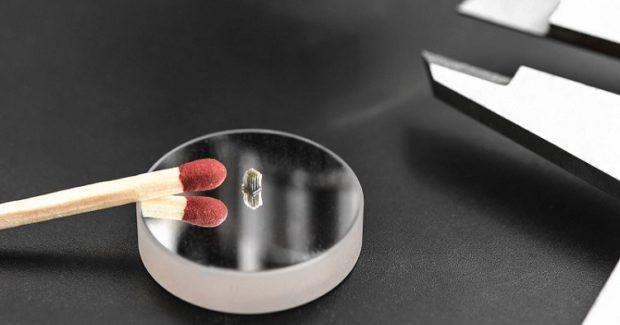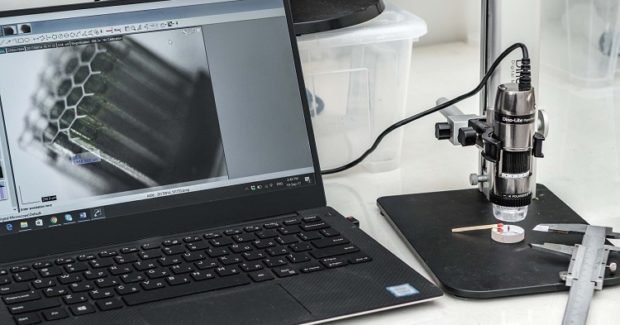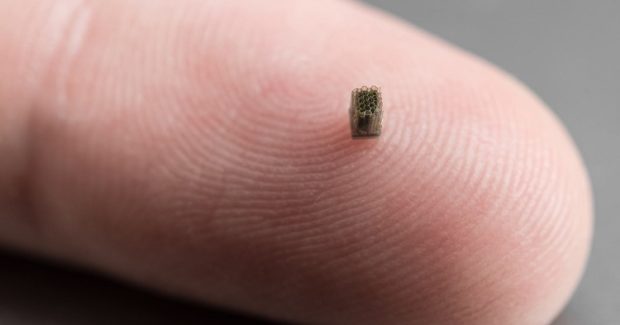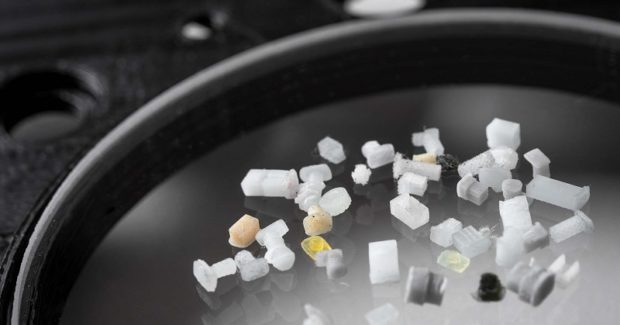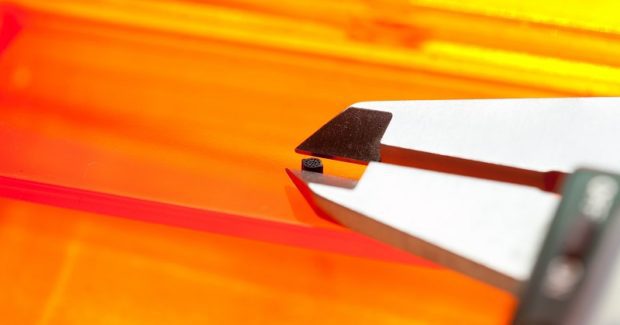True Disruption: 3D Printing Micro Components
Until this micro-AM technology was introduced, the requirements for ultra-precision, repeatable resolution and surface finish from the micro-manufacturing sector were impossible to achieve through the use of 3D printing.
Posted: July 10, 2019
There are two current global trends in manufacturing: one towards miniaturization that demands parts and components with highly precise micron and sub-micron level resolution, and the other towards digital manufacturing and Industry 4.0. Now a technology exists at the intersection of additive manufacturing and micro-manufacturing that opens up the possibility for more manufacturers to take advantage of the inherent advantages of 3D printing while achieving micron level accuracy over a build envelope of 5 cm x 5 cm x 10 cm. AM has made the shift from prototyping to true production, but a lack of insight exists in some sectors about what can really be produced on AM platforms and the inherent characteristics of the process that add significant advantages in terms of cost, complexity, and timeliness of manufacture. In the micro-manufacturing sector, for example, the inexorable shift towards miniaturization demands extremely exacting levels of micron and sub-micron precision on macro and micro parts that creates huge potential for 3D printing.
Until recently, the ability for AM to build this level of precision at all – let alone at volume production levels – has been impossible. Key AM platforms struggle to get resolution under 50 microns, and the few micro-AM systems available are either extremely expensive in terms of machine costs and cost per part, or extremely slow, or can only print parts that are very restricted in size. But now, our micro-AM technology enables high precision at a cost required for industrial manufacturing, and it specifically targets manufacturers that require micron and sub-micron levels of resolution and surface finish. The process is based on a digital light processor (DLP) engine, but to achieve repeatable micron levels of resolution it combines DLP with the use of adaptive optics. This tool, in conjunction with an array of sensors, allows for a closed feedback loop – the core element in reaching very high accuracy while remaining cost-effective as a manufacturing solution. Where other micro-AM platforms achieve precision through great hardware, this system tackles the issue with software, where solutions are easier, more robust, and less expensive. It is the first time that adaptive optics have been applied to an AM technology.
This micro-AM platform can achieve micron resolution over centimeter-sized parts by combining a number of technologies, specifically by taking the innovative use of adaptive optics and enhanced this imaging unit with technology and know-how used in the semiconductor industry, where attaining micron and sub-micron resolutions over many centimeters is routine. By working at the intersection of semiconductors and AM, this system can build large “macro” parts with intricate micro details. It can also do this at speed by introducing a multi-resolution strategy where the fine details required on parts are printed relatively slowly, but the areas where the details aren’t so exacting are printed at speeds 10X to 100X times faster. This makes the entire printing speed anything from 5X to 100X faster than other micro-AM platforms. For OEMs requiring small parts, thousands of parts can be printed in a single build, making it a true mass manufacturing technology for micro-product or component manufacturers.
Multi-resolution capability is possible through the use of hardware that enables a trade-off between speed and resolution, and software algorithms that prepare the part and printing path by defining and sectioning it into low and high resolution areas, which are then fed into the printer path and machine parameters. There are not only two resolutions, but a spectrum of resolutions that allow speed to be optimized while maintaining satisfactory results throughout the part. The final algorithm family focuses on file preparation, optimizing parameters such as print angle build plate, supports, etc. – once again ensuring a precise, optimized, and reliable print process. In the area of materials, through rigorous R&D we have developed our own proprietary materials, based on the most commonly-used industry polymers, which enable ultra-high resolution in parts built.
As the first micron-level resolution additive manufacturing technology with cost effective, repeatable operation, this micro-AM system is a true alternative to micro-molding and other traditional manufacturing processes. Micron resolution can be achieved on centimeter-sized parts and thousands of them can be made in a single build, making this technology a perfect fit for manufacturing various micro-optical components. The ability to produce complex, extremely flat, extremely small and extremely lightweight optics opens up huge potential for product innovation in many sectors.
For a variety of reasons, including green manufacturing considerations and the design freedom that working in plastic allows, plastic has become an increasingly popular material for micro-optic applications. Because of this, micro-injection molding is popular in micro-optics manufacturing and was really the only viable technology for low cost, high volume production runs – until this micro-AM technology was developed. The use of injection molding for micro-optic manufacture requires the optimization of design, mastering, tooling and production steps, meaning a close interaction between supplier and product developer is vital. But micro-AM overcomes complexity issues and eliminates the need for tooling – a key to why the technology is used for an array of applications, including the manufacture of jigs and fixtures for optical alignment, optical connectors for optical fibers, fiber optic ferrules and other small related elements, and optical elements such as lenses and prisms.
Currently, most precision optical assemblies are undertaken using precision robotics. With the micron resolution printing capabilities of micro-AM, customers can build a jig that allows for precise positioning of optical parts. They use our micro-AM platform to make optical connectors and fibers, lenses and prisms, and illumination optics. With continual development of surface finish, we expect to be able to print imaging optics in the very near future. For the first time, manufacturers that require micron and sub-micron level accuracy and resolution have an AM platform available to gain competitive advantage. Because AM is agnostic to part complexity, it is possible to design and manufacture unique geometries of parts and features that were previously impossible.
Today, innovation in medical applications is largely driving the micro-optic sector and is constantly increasing the demand for smaller, higher quality and more versatile micro-optics. In the medical device sector, micro-optic development is working hand-in-hand with advances in compact sensors and illumination methods to further refine devices such as endoscopes and various invasive camera applications. This is where micro-AM pushes the boundaries, opening up the manufacture of parts and components previously considered impossible using traditional manufacturing processes.
Additive manufacturing has many innate advantages as a production tool, among which are the fact that it allows designers to think outside the box when it comes to apparent design restrictions, and of course multiple design iterations can be made speedily to stimulate the creation of innovative end products. But until this micro-AM technology was developed, the requirements from the micro-optics sector in terms of ultra-precision and repeatable resolution and surface finish were impossible to achieve through the use of 3D printing. Using our micro-AM platform, OEMs can now – in a single process – create micro-optical polymer-based products with complexity and features, such as freeform surfaces that would either be impossible using conventional manufacturing technologies or be prohibitive in terms of time and cost.







